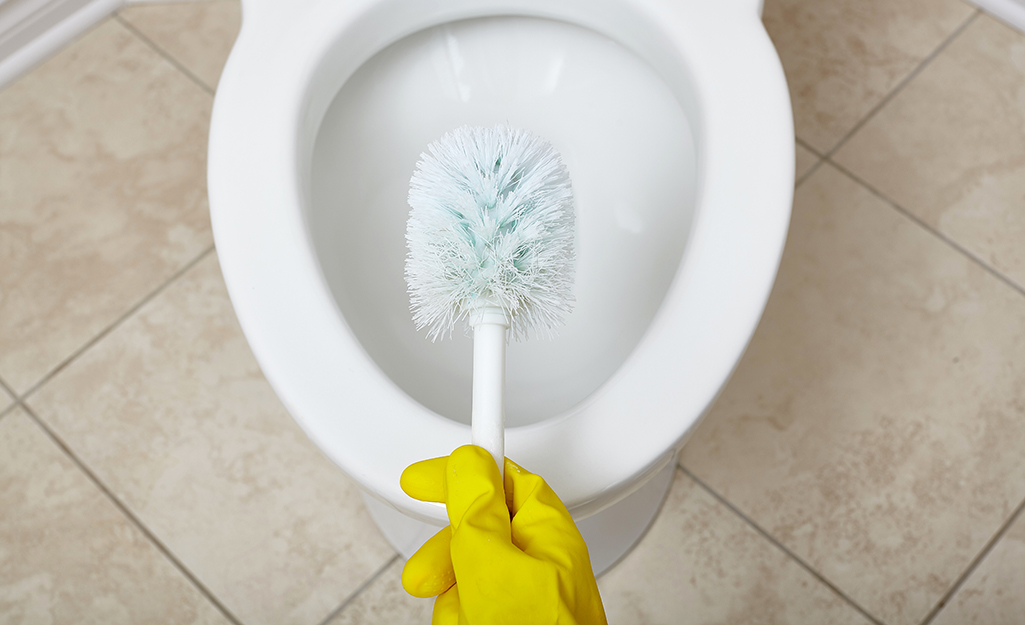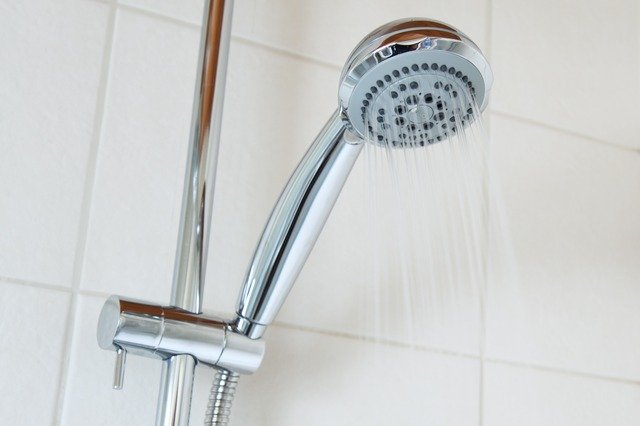A slow-flushing toilet can be frustrating, especially when it seems to take forever to do its job. You might be wondering if you need to call a plumber, but the good news is—you don’t have to.
With a little know-how and a few simple tools, you can fix the problem yourself and save both time and money. Imagine how satisfying it would feel to flush your toilet and see it work perfectly again—no more waiting, no more stress.
In this guide, you’ll discover quick, easy-to-follow steps to get your toilet flushing like new, without the hassle of hiring a professional. Stick around, and you’ll feel confident tackling this common household issue on your own!

Credit: www.homedepot.com
Table of Contents
Common Causes Of A Slow Flushing Toilet
Is your toilet taking forever to flush? A slow-flushing toilet can be frustrating and inconvenient, but the good news is that most of the time, you don’t need a plumber to fix it. Understanding the common causes is the first step to getting your toilet back to normal.
Clogged Drain Or Pipes
Blockages in the drain or pipes are one of the most frequent culprits. Even partial clogs can slow down the water flow and weaken the flush. Think about what’s been flushed recently—excessive toilet paper, hygiene products, or even small objects could be the issue.
To check for a clog, try using a plunger. A few firm pushes might be all it takes to dislodge the blockage. If that doesn’t work, a plumbing snake can help reach deeper into the pipes.
Low Water Levels In The Tank
Low water levels in the tank often mean the toilet lacks the force needed for a strong flush. Open the tank lid and take a look. The water should be at or near the fill line marked on the inside of the tank.
If the water is too low, adjust the float arm or fill valve to allow more water to enter the tank. This simple fix can make a noticeable difference in how your toilet flushes.
Mineral Build-up In The Rim Holes
Over time, mineral deposits can clog the small holes under the toilet’s rim. These holes release water during a flush, so if they’re blocked, the flush will be weak and slow.
Grab a small mirror and check under the rim. If you see white or yellowish build-up, it’s time to clean. Use a wire hanger or a stiff brush to scrape the holes gently, then flush a couple of times to clear out any debris.
Malfunctioning Flapper Or Chain Issues
A flapper that doesn’t open fully or a chain that’s too short or too long can cause incomplete flushing. Open the tank and observe how the flapper and chain operate during a flush. Do they move freely or get stuck?
If the chain is too loose, adjust the length so the flapper lifts completely. If the flapper is worn out or damaged, replacing it is inexpensive and straightforward. A quick trip to the hardware store might be all you need.
By addressing these common causes, you can likely fix your slow-flushing toilet without calling for professional help. Which issue seems most likely to be slowing down your flush? Take a closer look—you might be just a few simple adjustments away from solving the problem.
Tools And Materials You’ll Need
Fixing a slow flushing toilet doesn’t always mean calling a plumber or spending a lot of money. With the right tools and materials, you can handle the issue on your own. Let’s dive into the essentials you’ll need to tackle this common household problem effectively.
Basic Household Tools
Start with the basics. Grab a screwdriver, adjustable wrench, and a pair of rubber gloves. These are staples that you likely already have in your home toolbox.
A screwdriver can help you tighten loose bolts or remove the toilet tank lid. An adjustable wrench is perfect for loosening or securing connections, like the water inlet valve. Gloves? They’re just smart—no one wants to touch the inside of a toilet bare-handed.
Cleaning Solutions And Brushes
A slow flush is often caused by buildup inside the toilet bowl or tank. Cleaning solutions and brushes are your best allies here. Look for toilet-specific cleaners that can break down hard water deposits or grime.
If you don’t have commercial cleaners, you can mix baking soda and vinegar for a DIY solution. Pair it with a stiff toilet brush for scrubbing. Don’t forget to clean the rim jets under the toilet bowl—they often hide stubborn debris.
Plunger Or Drain Snake
If your toilet is clogged, a plunger or drain snake can save the day. A plunger creates suction to dislodge minor blockages. Make sure you’re using a flange plunger, which is designed for toilets.
For tougher clogs, a drain snake works wonders. It’s a flexible tool that can reach deep into the pipe to break up obstructions. You don’t need to be a pro to use one—just insert it, twist, and pull out the clog.
Replacement Parts For Quick Fixes
Sometimes, the issue lies in worn-out components inside the tank. Common replacement parts include the flush valve, flapper, and fill valve. These are inexpensive and easy to install.
Check if your flapper is sealing properly or if the fill valve is letting enough water into the tank. If not, head to your local hardware store and grab replacements. Most come with simple instructions, so you won’t be left scratching your head.
Have you ever fixed a toilet with just a screwdriver or a plunger? It’s empowering to solve these problems yourself. The right tools and materials turn frustration into a quick and satisfying win.
Steps To Fix A Slow Flushing Toilet
A slow flushing toilet can be frustrating and inconvenient. Fortunately, you can fix most issues without hiring a plumber. Follow these simple steps to restore your toilet’s flushing power. Each step targets common problems that cause slow flushing. Let’s get started.
Inspect And Adjust The Water Level
Start by checking the water level in the tank. Lift the lid and see if the water reaches the marked fill line. A low water level can weaken the flush. Adjust the float to ensure the tank fills to the correct level. Turn the adjustment screw on the float arm or slide the float up or down if needed.
Clean The Rim Holes And Jets
Mineral deposits can clog the rim holes under the toilet bowl’s edge. Use a small wire or a brush to clean each hole. Check the siphon jet at the bottom of the bowl too. Scrub away any buildup using a brush and a cleaning solution. This helps water flow freely during flushing.
Unclog Using A Plunger Or Snake
A partial clog can slow the flushing process. Use a plunger to create suction and dislodge debris. If the plunger doesn’t work, try a toilet snake. Feed the snake into the drain to remove blockages. Always use gentle pressure to avoid damaging the pipes.
Replace Or Adjust The Flapper
A faulty flapper can cause a weak flush. Open the tank and inspect the flapper for damage or wear. If it’s cracked or doesn’t seal properly, replace it. If it looks fine, adjust the chain connected to the flapper. Ensure the chain has a slight slack for proper operation.
Preventing Future Flushing Issues
Preventing future flushing issues can save you time, stress, and money. By taking a few simple steps, you can ensure your toilet flushes smoothly for years. Regular care and smart habits can make a big difference.
Regular Cleaning And Maintenance
Clean your toilet bowl weekly to avoid mineral buildup. Use a toilet brush and a non-abrasive cleaner to scrub away grime. Inspect the flush mechanism monthly to ensure all parts move freely. Check the chain, flapper, and handle for wear and tear. Replace any worn-out components immediately to maintain proper flushing power.
Avoiding Non-flushable Items
Only flush toilet paper and human waste. Other items can clog pipes and slow flushing. Common culprits include wet wipes, cotton balls, and sanitary products. Keep a trash bin near the toilet to dispose of non-flushable items. Teach everyone in the household to follow this simple rule to prevent blockages.
Using Water Softeners For Hard Water
Hard water can cause mineral deposits in your toilet’s pipes and tank. These deposits reduce water flow and weaken the flush. Installing a water softener can minimize mineral buildup. Alternatively, clean the tank with a vinegar solution every few months. This removes existing deposits and improves flushing efficiency.
When To Call A Plumber
Trying to fix a slow flushing toilet yourself can save money. But not every issue can be solved without professional help. Some problems are beyond simple adjustments or cleaning. Knowing when to seek expert assistance can prevent further damage. Below are key signs to watch for before calling a plumber.
Persistent Issues After Diy Fixes
DIY fixes are often simple and effective for minor toilet issues. Cleaning the rim holes or adjusting the flapper can solve slow flushing. But if the toilet continues flushing slowly after trying these fixes, there might be a hidden problem. Persistent issues could point to internal damage or deeper blockages.
If DIY solutions fail to improve the flush, it’s time to reconsider. Ignoring ongoing problems may lead to more costly repairs later. Professional plumbers have tools to identify and solve complex issues quickly.
Signs Of A Major Plumbing Problem
Some toilet problems are signs of bigger plumbing issues. If water backs up into the toilet bowl or drains, it may indicate a clog in the main sewer line. Unpleasant odors can also signal serious plumbing trouble. These issues affect more than just the toilet and may impact the entire plumbing system.
Sudden changes in water pressure or frequent leaks are red flags. They might mean damaged pipes or weak seals within the plumbing. A professional plumber can assess these problems and provide long-term solutions.

Credit: www.familyhandyman.com
Frequently Asked Questions
Why Is My Toilet Flushing Slowly But Not Clogged?
A slow-flushing toilet may result from mineral buildup, partial blockages, low water levels, or a faulty flapper valve.
What Product Is Good For Slow Flushing Toilets?
Use enzyme-based drain cleaners or products like Drano Max Gel to clear clogs and improve slow flushing toilets effectively.
How To Fix A Toilet That Keeps Trickling?
Check the flapper valve for damage or misalignment. Replace it if necessary. Adjust the float or fill valve settings to stop trickling.
How To Fix A Low Pressure Flush Toilet?
Check the water supply valve and ensure it’s fully open. Clean the toilet tank and unclog the rim holes. Adjust the float level for proper water fill. Inspect and replace the flapper or fill valve if necessary. Ensure proper venting to avoid air pressure issues.
Conclusion
Fixing a slow flushing toilet doesn’t have to be complicated. With these simple steps, you can solve the issue on your own. Regular maintenance helps prevent future problems and keeps your toilet working well. Always check for clogs, clean the tank, and adjust water levels if needed.
These small efforts can save you time and money. If the problem persists, consider consulting an expert. A well-functioning toilet makes daily life smoother. Start fixing it today and enjoy hassle-free flushing.







